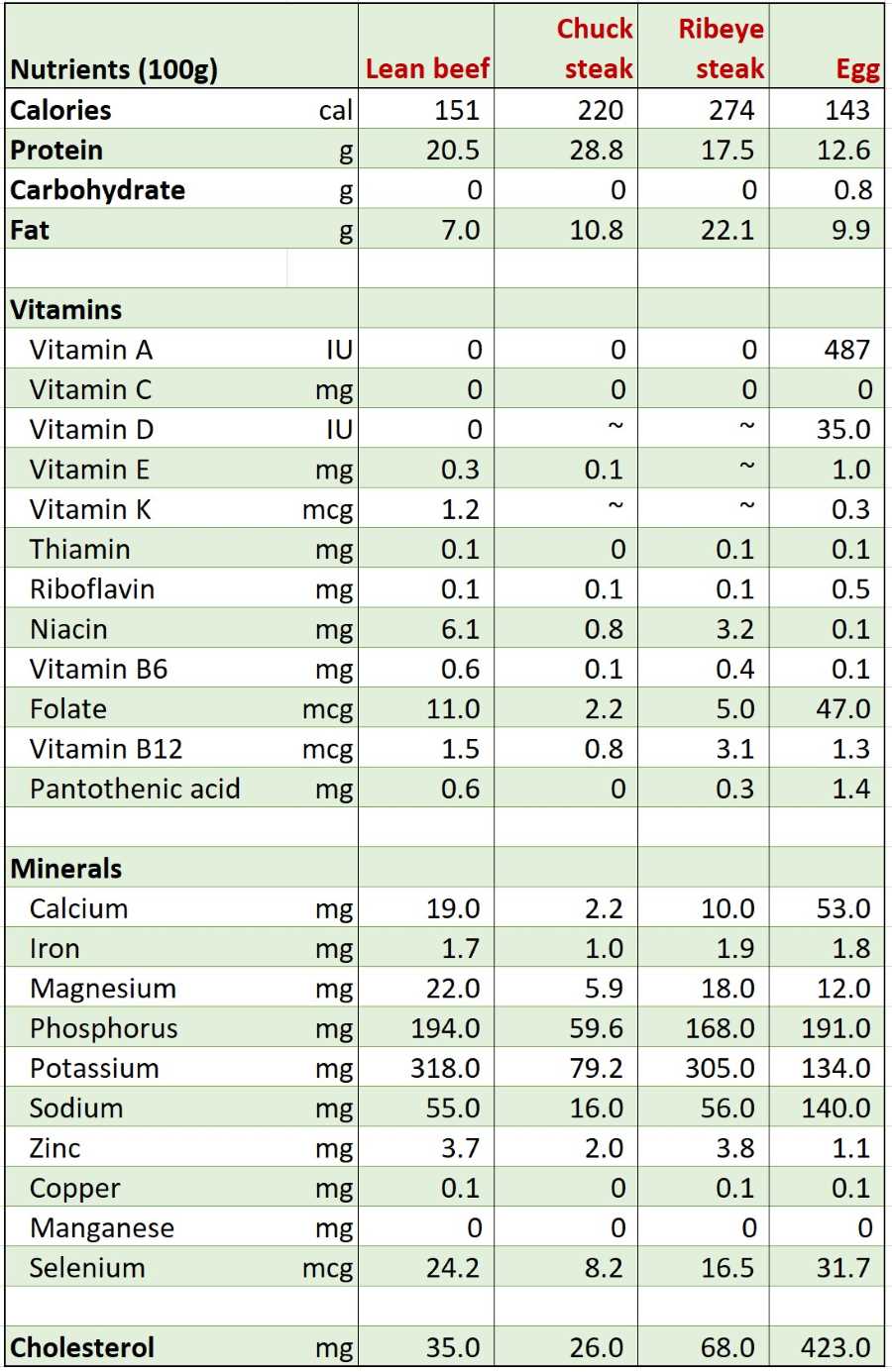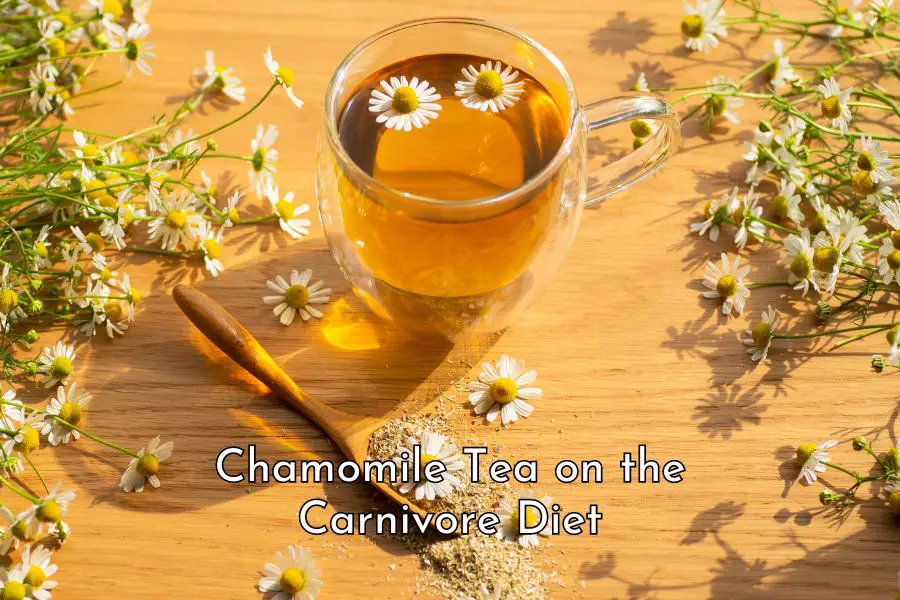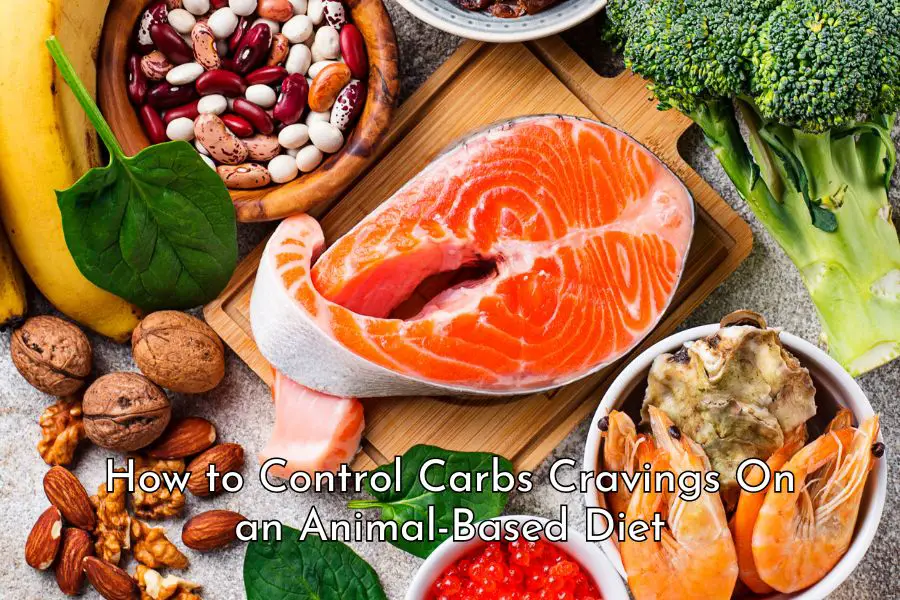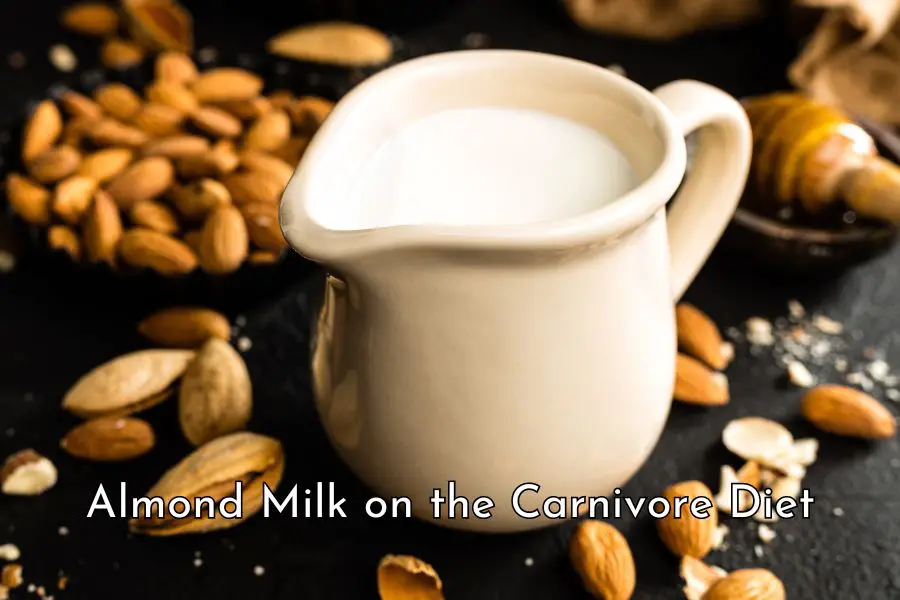There are so many versions of the carnivore diet out there, from a simple ribeye steak only diet, a beef, salt and water diet to a meat plus fruit and honey diet and it can be confusing to those who are new to this diet.
This post will cover eight common versions of the carnivore diet, their pros and cons, and who they may be suitable for to help you choose a diet that suits you best.
Table of Contents
- Ribeye steak diet
- Beef, salt, and water diet
- Steak and eggs diet
- A nose-to-tail ruminant-based diet
- Broad animal-based diet
- Ketovore diet
- Carnivore diet with fruits and honey
- Carnivore-adjacent diet
- Conclusion
Ribeye steak diet
What is a ribeye steak diet?
A ribeye steak diet is a diet comprising only ribeye steak which is a boneless steak from the primal rib section which lies between the shoulder and the loin.
Some people live on just rib-eye steaks only and seem to thrive on this extremely simple diet.
Joe and Charlene Anderson, for example, claim that they have been on a diet of just rib-eye steak without salt, seasonings, or supplements for over 20 years and seem to be in perfect health.
While some people are meticulous about their macro ratios and supplement with things like electrolytes, magnesium and calcium on the carnivore diet to meet RDAs for essential nutrients, Joe and Charlene say they only eat meat and drink water.
Is a ribeye steak diet healthy?
At first glance this diet appears extreme, however, it is actually a lot healthier than many people think, especially when compared to a standard Western-style diet.
This is because, in addition to being succulent and flavorsome, ribeye steak provides you with almost all of the nutrients that your body needs and has a very favorable fat-to-protein ratio.
Ribeye steak is a great source of complete protein and healthy fat. A 100-gram serving has around 18 grams of protein and 22 grams of fat, including omega-3 fatty acids. [1]
It is also a great source of vitamin B12, vitamin B6, niacin, zinc, selenium, phosphorous and iron. [2]
It also provides a wide range of other vitamins and minerals such as thiamin, riboflavin, folate, pantothenic acid, calcium, magnesium, potassium, copper, and manganese in smaller quantities. [3]
It definitely has enough vitamin C to prevent you from getting scurvy which is not known to be prevalent amongst people on a meat-based diet.
Although some nutrients such as vitamin E, vitamin D, and vitamin K are found only in very small quantities in muscle meat, they are not zero as assumed by the USDA. [4, 5, 6, 7]
In short, ribeye steak provides you with all the essential nutrients that your body needs. Although it won’t help you meet RDAs for many nutrients (e.g. calcium, folate, vitamin D, vitamin E, etc.), the RDAs which aim at the general population are unlikely to be relevant for people on the carnivore diet.
Ribeye, like other animal-sourced foods, also has an abundance of many beneficial bioactive compounds like taurine, carnitine, conjugated linoleic acid, creatine, and endogenous antioxidants. [8]
Furthermore, ribeye steak delivers around 70%-80% calories from fat and 20% to 30% calories from protein. [9]
This is considered a very good fat-to-protein ratio. Many people on the carnivore diet report that they feel good on the fat-to-protein ratio of around 70% to 80%.
The pros and cons of a ribeye steak diet
A ribeye steak diet is extremely simple and easy to follow. It is also nutrient-dense, satiating and very healthy compared to a typical Western-style diet.
This diet is great for someone who is in good health and aims to maintain weight or lose weight because of its almost zero carb content.
However, a ribeye steak diet is expensive and not many people can afford this diet.
Although ribeye steak can provide you with all nutrients that your body needs albeit in varying quantities, there is no evidence that this extreme diet is generally safe long-term for everyone. This is also not the way our ancestors ate for millions of years.
If your goal is to fix some health problems, you would be missing out on organ meat, the most nutrient-dense food, which can help you heal faster.
In my opinion, a ribeye steak diet plus organ meat a few times a week would generally be a better option.
Beef, salt, and water diet
This diet is very similar to the ribeye steak diet with the addition of salt.
This diet is what Mikhaila Paterson came up with after years of battling numerous chronic health problems that modern medicine had failed to help her.
After trying various diets and cutting out food groups, Mikhaila was left with just beef, salt and water. This simple diet has helped her to get off over 10 medications and put several, seemingly incurable, life-long diseases into complete remission, including arthritis, depression, bipolar type II, idiopathic hypersomnia, Lyme disease, psoriasis, and dyshidrotic eczema.
Later on, Mikhaila added other ruminants like lamb, goat, and elk, etc and coined the term “the lion diet”.
Similar to the ribeye steak diet, the beef, salt and water diet is very simple to follow. Eat meat, season with a bit of salt if you like and drink water, no calorie counting and no macro-micro nutrient monitoring, it can’t get simpler than that.
It is also an extremely clean diet because you cut out all processed foods, grains, seed oils and chemical additives. Like the ribeye steak diet, it is a lot healthier than any typical Western diet that you can think of.
However, excluding organ meat means you are missing out on the most nutrient-dense food you can eat.
While some people may do very well with just beef, salt and water, adding organ meat which is the most nutrient-dense food possible can help you accelerate healing and achieve optimal health.
As to the addition of salt to this diet, there is no evidence that our ancestors had used salt as a part of their diet throughout the history of human evolution.
Meat itself already contains sodium, potassium and other electrolytes in a perfect natural ratio. The addition of salt to the human diet happened relatively recently following the advent of agriculture.
However, available evidence does not indicate that salt consumption, even at a level higher than currently recommended, may result in adverse health consequences.
In short, the beef, salt and water diet is a simple and healthy diet but it is not an optimal one because it excludes organ meat, the most nutrient-dense food group.
Steak and eggs diet
What is the steak and eggs diet?
The steak and eggs diet is not new. It emerged in the 1960s and is credited to Vince Gironda (1917-1999), an American professional bodybuilder, personal trainer, founder of NPS Nutrition, a supplement company, and owner of the celebrity-frequented Vince’s Gym.
Vince Gironda’s version of the steak and eggs diet is not a pure carnivore diet, however. It recommends steak and eggs in all meals but a carbohydrate meal (spaghetti with sauce only) is added every three days.
The steak and eggs version of the carnivore diet, of course, includes only steak and eggs.
Is the steak and eggs diet healthy?
While it may appear restrictive and unbalanced, it is actually a very healthy diet that provides you with everything your body needs, including good quality proteins and fats, all essential vitamins and minerals as well as many beneficial bioactive compounds.
As can be seen in the table below, steak and eggs are high in complete proteins, good quality fats (including omega 3 fatty acids), vitamins B12, B5, and B3, selenium, zinc, phosphorous, folate, iron, and vitamin A.
The humble egg is truly nature’s superfood. The fact that it has everything needed to create a perfect little bird shows how nutrient-dense it is.
There is no essential nutrient that you can’t find in this simple diet (note that in the table below, vitamin C and magnesium display a zero value because the USDA assumes so but they are not zero. Meat does contain some vitamin C and magnesium). [10]

As with the ribeye diet or the beef, salt and water diet, in the absence of organ meat, some essential nutrients on this diet may be low and do not meet the RDAs.
However, when you eat a clean diet like this that is free from all processed foods, seed oils and grains that are inflammatory, your nutrient needs may differ substantially from those who are on a standard Western-style diet.
Personally, I wouldn’t worry about meeting the RDAs for essential nutrients on the carnivore diet too much.
Should you worry about the high cholesterol level on the steak and eggs diet?
This diet is especially high in cholesterol due to the high cholesterol content in eggs. However, dietary cholesterol shouldn’t be a concern.
Cholesterol is essential for human life. Every single cell in your body contains cholesterol. Cholesterol is an essential component of the cell membrane and contributes to the structural makeup of the membrane as well as modulates its fluidity. [11]
Cholesterol is so important that if you don’t get enough of it from dietary sources, your body will make it.
On the carnivore diet, your cholesterol profile is likely to change, in particular, there may be an increase in the so-called “bad” cholesterol (LDL-C). However, this change is not necessarily a concern and can even be a good thing if it is due to the increase in LDL particle size. [12, 13]
The pros and cons of the steak and eggs diet
The steak and eggs diet is simple, healthy, and easy to follow.
However, this diet is not suitable for those who have an egg allergy.
In addition, if you’re trying to heal from some chronic health conditions, it’s a good idea to focus on eating the most nutrient-dense food and that means regularly including organ meats like liver, heart, kidney, marrow and brain. A ruminant-based diet (discussed below) with plenty of fat and organ meat is the way to go in this case.
Furthermore, if you can’t afford pasture-raised eggs, it may not be a good idea to consume a lot of caged eggs or even free-range eggs which are from hens raised in very similar conditions.
Caged eggs are laid by hens that spend their entire life in cages. They eat, poop, and lay eggs in the same crowded cages.
Due to their unnatural diets, caged egg yolk has a pale white color that is unappealing to consumers and food dyes are added to the hens’ feed so that the yolks of caged eggs would have different hues to suit consumers in different markets. [14, 15]
In some markets, cheap dye chemicals that are damaging to chicken and human health are being used freely in the poultry industry. Some even warn that these chemicals are carcinogenic. [16, 17, 18]
A nose-to-tail ruminant-based diet
A nose-to-tail ruminant-based diet would include meat, fat and organ from ruminants like beef, lamb, goat, elk, buffalo and roo.
Of all versions of the carnivore diet, in my opinion, this is the best version for healing and wellbeing because it includes the best quality animal-sourced food that is also most nutrient-dense.
There are several reasons why this is the best version of the carnivore diet to be on.
1. Ruminants are better raised
Ruminants like cows, sheep and goats are generally better raised than pigs, poultry, fish and other marine creatures.
Cattle, sheep and goats are generally raised outdoor in the natural environment for most of their lives. They are usually moved to feedlots toward the end of their lives when they are fed a grain-based diet to accelerate weight gain.
On the other hand, farmed pigs and chickens in concentrated animal feeding operations (CAFOs) spend most if not their entire lives in crowded cages. They are stressed and unhealthy.
Ruminant feeds may be supplemented with grains but because grains are just grass seeds and they are herbivores, their feed supplement is generally consistent with their natural diet.
Pigs and poultry, however, are omnivores and their natural diets are vastly different from what they are fed in CAFOs.
In the wild, pigs and chickens will feed on whatever they can find such as bugs, insects, grass, fruit, seeds, roots, etc. In those intensive farming operations, however, they are fed mostly grain, corn and soy meal.
2. Ruminants have a better nutritional profile
As a result of their diet and living conditions, ruminant meat generally has a better nutritional profile than pork or chicken.
Ruminants have multiple stomachs and they have the ability to convert polyunsaturated fatty acids (PUFAs) into saturated fatty acids. Therefore, even when ruminants are fed corn, soy and grains that are high in PUFAs, their PUFA levels remain low.
Pigs and chickens, however, are monogastric animals, i.e. they have a single stomach. They are unable to convert PUFAs into saturated fats. If they are fed a high PUFA diet, their fats will be high in PUFAs too.
And because humans also have a monogastric digestive system, when we eat a high PUFA diet, we will end up with more PUFAs in our bodies.
Fish and other farmed seafood don’t fare much better. They are crammed in small enclosures, are fed a composite diet and are treated with antibiotics and routinely injected vaccines.
Farmed salmon, probably one of the most popular seafood, is even fed colorings astaxanthin and canthaxanthin to dye their flesh pink. Canthaxanthin has been linked to retina damage in humans. [19]
Salmon’s feed is also supplemented with vegetables, chicken, other land animals, and increasingly plant-based food.
Between 2000 and 2016, the Norwegian salmon aquaculture industry cut its shares of marine protein in feed from 33.5% to 14.5% and marine oils from 31.1% to 10.4%, and increased the shares of plant proteins from 22.2% to 40.3% and terrestrial oils from 0 to 20.2%.
Naylor et al (2021)
3. Ruminants are more consistent with the way our ancestors ate
Multiple avenues of evidence point to the fact that our ancestors were hyper-carnivorous apex predators that ate mostly meat from large animals for 2 million years. They only began transitioning to a diet that included more plant food due to the extinction of megafauna. [20]
Larger herbivores like cows, buffaloes, and elks are more consistent with our ancestors’ diet than small omnivores.
The pros and cons of the nose-to-tail ruminant-based diet
I really can’t fault this diet
If you stick to only ruminant meat, fat and organs, you would be doing very well. You are eating the best quality and most nutrient-dense food possible.
In my opinion, this diet is the best for healing and general wellbeing.
If you can afford it, wild-caught ruminants would be the best. Highland grazing animals are also good because their feed is less likely to be contaminated.
The only minor issue I have with this diet is the loss of metabolic flexibility due to the exclusion of all plant food.
However, for some people with chronic health conditions, including even just a little bit of plant food is not an option.
Broad animal-based diet
A broad animal-based diet includes all animal-sourced foods like ruminant meat, pork, poultry, seafood, dairy and even honey.
This diet is less restrictive compared to the four diets discussed above.
This is a great diet to be on if you are generally in good health, don’t have any food allergy problems, or don’t like organ meat very much.
Because you will be eating a variety of food on this diet, you won’t have any problems getting sufficient nutrients for your body’s needs. It is also a lot more fun given the variety of food to choose from.
This diet is more suitable for those who can afford good quality food such as pasture-raised pork and poultry and wild-caught seafood.
As discussed above, farmed pork, chicken and seafood are not the best thing to eat on the carnivore diet given their breeding conditions and nutritional profile.
If you can afford top quality animal-sourced foods, eat a wide range of food and eat as much as you like.
If you can’t, it’s best to make ruminant fat, meat and organ the bulk of your diet and add other foods only occasionally in small quantities for variety.
Ketovore diet
A ketovore diet is a carnivore diet that is designed to keep you in ketosis.
Unless you consume a lot of dairy products or eat a lot of honey, you are likely to be in ketosis on the carnivore diet without much effort.
Your intake of animal fats, butter, ghee or cream on this diet will need to deliver at least 70% to 80% of calories from fat and your carbohydrate intake needs to be maintained at a negligible level in order to achieve ketosis.
Amongst the food options, fatty ruminant meat and ruminant fat are likely to be the best choice.
Staying in deep ketosis makes sense for people who are trying to lose weight or are using diets as a way to manage certain health conditions.
For example, some cancer patients have successfully kept their cancer under control by eating a high-fat animal-based diet. [21, 22, 23, 24, 25]
According to the theory that cancer can be best defined as a metabolic disease proposed by Professor Thomas Seyfried, while normal cells can survive on both glucose and ketones, due to their impaired mitochondrial function, cancer cells can only rely on glucose and glutamine as energy sources. [26, 27]
By restricting carbohydrate and protein intake, you are creating an unfavorable condition for cancer cells and preventing them from proliferating.
Similarly, a ketovore diet also makes sense for people with diabetes because of the very little carb intake on this diet.
Carnivore diet with fruits and honey
A carnivore diet with fruits and honey means you eat an animal-based diet with the addition of fruits and honey.
Dr. Paul Saladino who used to be on a strict carnivore diet is now a proponent of this diet.
If you have been generally healthy and don’t have autoimmune conditions or metabolic syndromes, this may be a diet for you.
This diet is closer to our ancestors’ way of eating than an exclusively meat-only diet.
Our ancestors were certainly not strictly carnivores, they would have eaten fruits, honey, nuts and perhaps some tubers when meat was scarce.
If this way of eating is your preference and makes you happy, I would say go for it.
However, if you are trying to lose weight or heal from some metabolic issues, a nose-to-tail ruminant-based diet is likely to be a better choice.
If you are trying to control your cancer growth, the addition of fruits and honey which will affect your blood glucose may not be a good idea either.
For example, Pablo Kelly, a cancer patient who remains alive with good quality of life after being diagnosed with the most aggressive form of brain cancer 8 years ago, found that his cancer came back after he relaxed his diet by incorporating berries and increasing his calorie intake.
Carnivore-adjacent diet
This is the most flexible version of the carnivore diet.
Basically, you will be eating a meat-based diet but may still have tea, coffee, occasional alcohol, a slice of cake on a birthday or share an ice cream with your kids on a hot summer day.
This diet is easy to follow and less stressful. You don’t need to explain to other people about your “unusual” dietary choices. You can eat with your family, friends and colleagues with no problems on this diet.
If you are in good health, don’t have a carb addiction, this diet may suit you.
This may not be the best or the healthiest diet out there but if it reduces your stress and makes you happier and it works for you, there is no reason to feel guilty about it.
However, one danger of this diet is it is very easy to slip up and get back to eating a lot of typical modern-day Western diet foods in no time.
Commercial food manufacturers know how to make unhealthy foods taste insanely good and highly addictive. It is very hard to eat just one slice of pizza or have a handful of chips.
The only way to find out if this diet works for you is to test it out. If you find yourself overeating those non-carnivore foods, putting on weight and not feeling very well afterward, it may be not for you.
Conclusion
At the baseline level, the statement that “one specie, one diet” is generally true.
We are a product of the evolutionary process and, like other species, we are meant to follow the diet that our ancestors had dined on for millions of years which is predominantly a meat-based diet.
However, at individual levels, people can come from very different backgrounds with different health and genetic conditions and different goals and they may benefit from different versions of the carnivore diet.
Which version of the carnivore diet you should be on ultimately depends on your health conditions, your goals and your personal preferences.
Other posts you might be interested in:
Is the Carnivore Diet Okay for High Blood Pressure?
Do You Need Supplements on the Carnivore Diet?
The Optimal Fat to Protein Ratio on the Carnivore Diet
Do You Need to Eat Fish on the Carnivore Diet?
The Paleolithic Ketogenic Diet and its Potential to Treat Chronic Diseases
How Andrew Scarborough Put His Brain Cancer in Remission with an All-Meat Diet
Pork on the Carnivore Diet: Yay or Nay?
Disclaimer: The information in this post is for reference purposes only and not intended to constitute or replace professional medical advice. Please consult a qualified medical professional before making any changes to your diet or lifestyle.
Photo credit: Louis Hansel on Unsplash.





